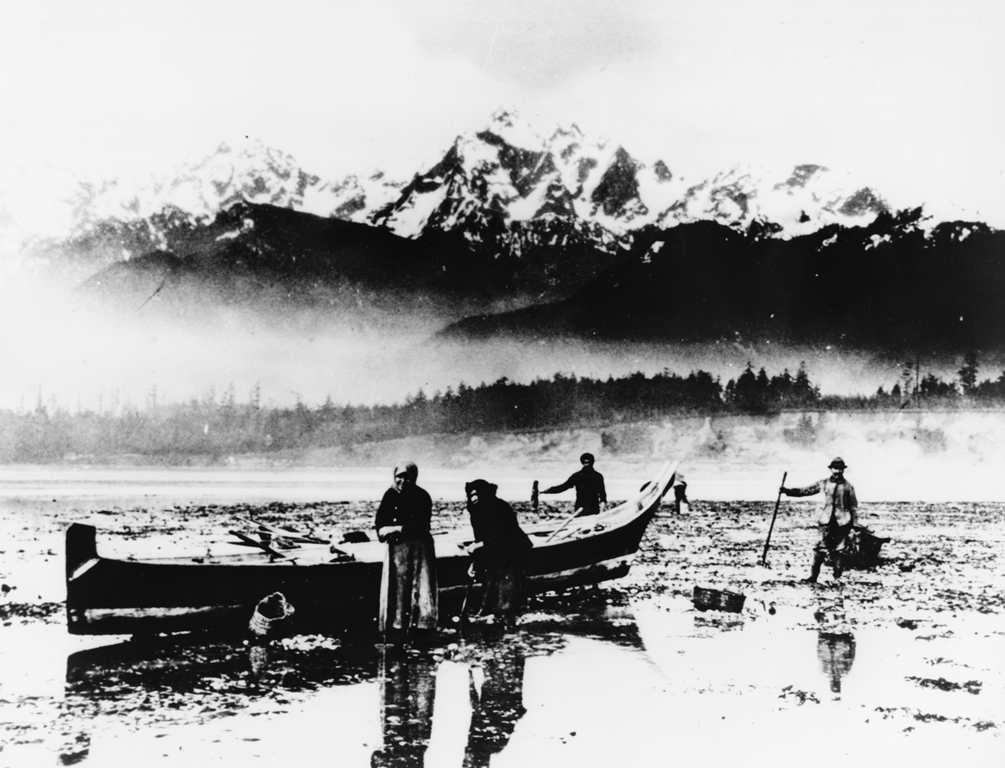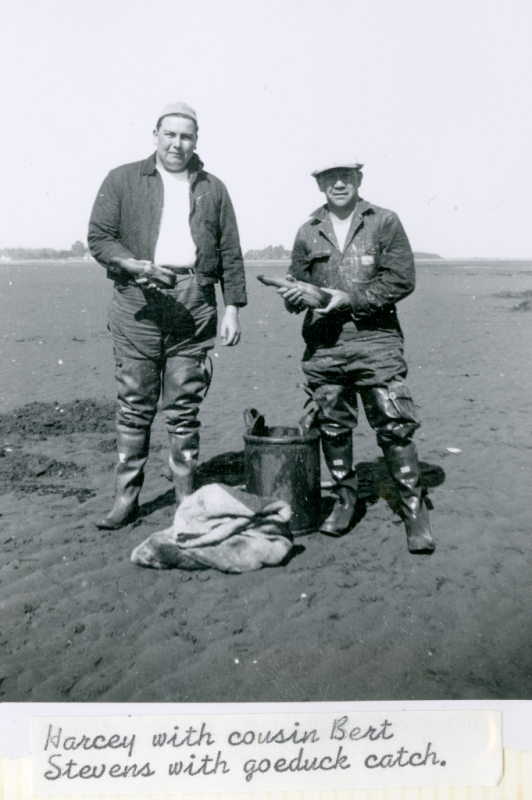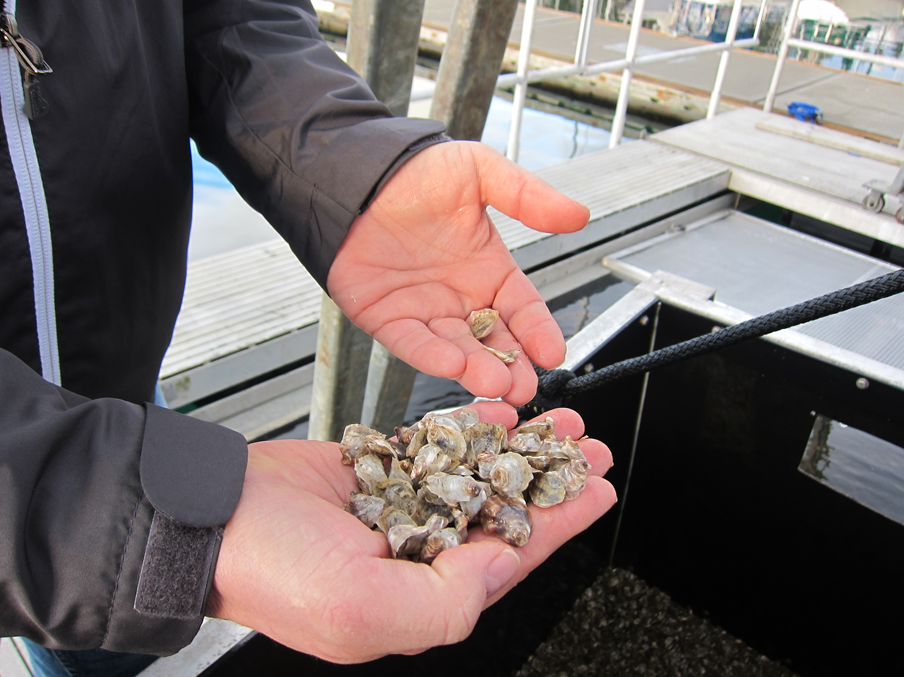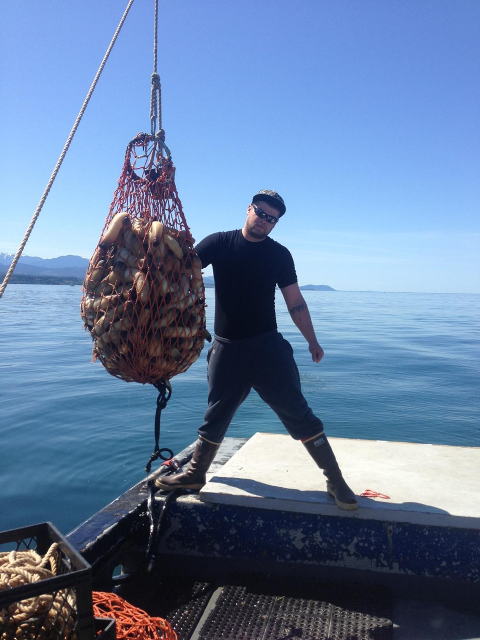
Treaty Rights & Resources
Shellfish
Shellfish was, and still is, a major staple of the S’Klallam Tribe. Varieties of clams included butter, little neck, cockles, geoduck, and horse clams. S’Klallam women, children and slaves used digging sticks to harvest the clams from the shores they lived on or near. “Women favored ironwood for the digging stick they used. The stick needed a sharp point, gentle curve, and a good grip. Most were three to six feet long, with a curved shaft and a fire hardened pointed end.” The Jamestown S’Klallam Story by Joseph Stauss

Prince family digging clams.
The Jamestown Shellfish Program is primarily responsible for the harvest management of shellfish resources, which include clams, geoduck, crab, shrimp and other species. In addition to maintaining records of all subsistence and commercial shellfish harvests, the shellfish program conducts several types of biological assessments, monitoring, research, aquaculture, and enhancement.

Charlie Becker and Bert Stevens with geoduck catch.
Today, the geoduck fishery is one of the largest revenue sources of the Jamestown S’Klallam tribe. Monies from the sale of geoducks contributes to the support of the Natural Resources, Social and Community Services, Higher Education and Elders’ services, cultural activities, and other programs.
It was a constant task to gather enough food for daily consumption as well as to preserve enough for the winter. To preserve the clams, holes were dug on the beach, lined with rocks and seaweed and a fire built on top. When the fire had burned to coals the clams were added, covered with cedar mats, and left to steam in their own juices. They were then removed, washed and skewered on a stick to dry over a fire. When ready they were flattened and strung into a ring of about forty clams. They were then dried by the fire for another week before being stored in open baskets. The dried clams were valuable as trade items with inland Tribes.

Baby Oysters
Geoducks, which can weigh up to ten pounds and live more than three feet below the surface, were difficult to dig so not a favorite of those who had to dig them. Harvesting worked best with two diggers—one to dig a four by four hole and the other to hold onto the neck of the geoduck.

Jesse Holden with a geoduck haul.

